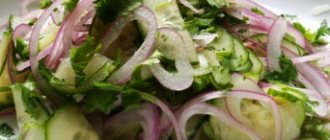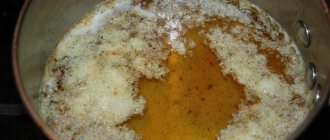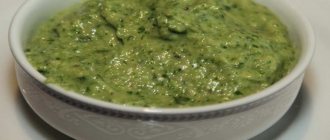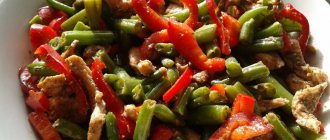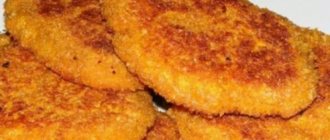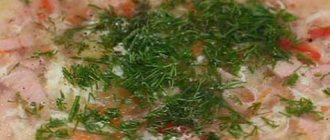There are real legends about the benefits of olive oil. It not only rids the body of cholesterol and prevents the development of cardiovascular failure, but also prolongs youth. That is why the Greeks and Italians, who are considered the discoverers and best producers of such a unique product, live much longer than ordinary people. And they use it both for deep-frying food, baking, and for heating food in a frying pan. But how to choose the right oil for frying (olive)? And what should you pay attention to when purchasing a product?
Look for an oil with a good pedigree
If you decide to purchase a really high-quality oil, pay attention to its “pedigree”. In particular, some Italian manufacturers pass on their business to family members, hence their enterprise has a long history. For example, the Monini clan is considered the most famous.
Representatives of this family are the owners of several large olive groves located in Umbria. It is known that Monini not only produces the best olive oil for frying, baking and salads, but also carefully monitors its quality.
According to the producers themselves, they personally, almost by hand, select each harvest and test the finished product before it goes into bottles.
How to choose olive oil
Olive oil is a superfood. High-quality oil is beneficial for the body. It contains Omega 3, 6 and 9 fatty acids (oleic acid), phytosterols and other beneficial substances. Olive oil is involved in the regulation of “bad” and “good” cholesterol in favor of good, and has a positive effect on hormonal levels.
All olive oil can be divided into 2 types.
- Extra Virgin. This is a product of the first pressing of olives, carried out in a cold way. This oil has maximum benefits, because the olives for it are hand-picked and are not subjected to heat or chemical treatment. Spinning is carried out immediately after collection. Thanks to its rich taste and aroma, this olive oil is suitable for salads.
- Pomace. This product is a blend of oils. It contains 85-95% refined oil, which is tasteless and odorless, and 5-15% cold virgin oil to give the dish a light olive aroma. This olive oil is chosen for frying.
When choosing between refined and unrefined olive oil, you should start from the intended use. If oil is purchased for salad dressing, without heat treatment, then it is better to choose an unrefined product. A mixture of refined and unrefined oil is suitable for frying.
To choose high-quality Extra Virgin oil, pay attention to several points.
- The container for storing oil should be made of dark glass or completely opaque (for example, a tin can). When exposed to light, olive oil changes taste and smell.
- The shelf life of virgin oil is up to 2 years. Therefore, it is necessary to examine the label for the production date. It is optimal to buy oil “no older than” six months. After opening the bottle, the shelf life of the product is 1 month.
- The acidity level should ideally not exceed 0.5-0.8%.
- The packaging may be marked PDO, DOP, IGP, BIO. They all talk about the highest quality control of ingredients and production process. This is the best olive oil.
- The color of the oil varies depending on the combination of ripe and green fruits and can be yellow-green, yellow or mustard, even brown. The main thing is that there is no sediment in it.
Some manufacturers add herbs and spices to the oil. You can do this yourself by adding your favorite seasonings to the bottle and letting it brew for 7-10 days.
Read the label carefully
If you pay attention to the oil label, you can learn more about not only its composition and manufacturer, but also what category it belongs to. For example, the following words may appear on the bottle:
- extra virgin;
- virgin;
- refined;
- pomace.
Extra virgin from this list is considered the most elite. This is the type of olive oil for frying that is best used in small quantities. The fact is that this product is a virgin oil and is considered the most concentrated. If you taste it, you can detect bright notes of astringency and soreness in the larynx. Moreover, it is precisely these taste qualities that indicate the freshness and value of the product, for the preparation of which no heat treatment was used.
And although extra virgin can be used for frying, it is still best used for making salads, baking, or when added to cosmetics to improve the condition of skin and hair. By the way, the price for such high-quality oil is very steep. For example, in Italy you need to pay at least 10 euros for a similar product.
Beneficial features
In countries where olive oil is produced, it is mainly used in cooking. They fry it, stew it, add it to baked goods, ready-made dishes, porridges and salads. They don’t even argue about its beneficial properties, because they are confident in them. But recently, many have begun to doubt whether it is possible to fry in olive oil. There has been a lot of talk about the fact that this product releases harmful substances during cooking, so it is advised to consume it only without heat treatment.
And in this form, olive oil has many beneficial properties, which have been proven by numerous studies and experience. For example, it has been noted that in Mediterranean countries, where it is often eaten, cardiovascular diseases are much less common. The thing is that olive oil contains a lot of monounsaturated fatty acids, which are necessary for normal life. Thanks to this, the following beneficial properties of this product appear:
- reduces blood cholesterol levels;
- prevents the development of atherosclerosis and Alzheimer's disease;
- protects against stomach ulcers and improves the functioning of the digestive system;
- improves metabolic processes;
- cleanses the body of waste and toxins;
- improves the condition of skin and hair due to its antioxidant effect;
- slows down the aging process;
- strengthens the immune system;
- prevents the development of cancer.
Features and differences between virgin and refined oils
Virgin is also one of the best plant-based products. However, it is somewhat inferior in taste, color and aroma to the one described above. In general, frying with this type of olive oil will bring you complete pleasure, as it does not foam or splash. And the main thing is that you can fry in the same oil (unlike sunflower oil) several times.
Refined, or refined oil, occupies an honorable third place in the above line. It is also considered good and classified as a high quality herbal natural product.
But, unlike the two previous types, a certain purification technology was used in its preparation, which somewhat reduces the characteristics of the oil. In addition, according to well-known manufacturers, during the preparation of such a product, not selected olives are used, but everything in a row, including spoiled ones. Therefore, this is a suitable oil for frying (olive, and everything else - refined).
What is pomace butter made from?
According to many oil producers, olives have virtually no waste, since literally all of them go into use. This statement perfectly reflects the essence of a product labeled pomace. It turns out that to produce such a product, oil is extracted from the remains of olives that have previously been squeezed and used to prepare a different variety. In this case, such cake is additionally processed with a special solution, placed under a press or subjected to a centrifuge.
And although a small amount of beneficial antioxidants is present in this oil, it is significantly inferior to all other types of product in terms of taste. In addition, for greater effect, manufacturers can add cottonseed and sunflower oil to pomace. Despite all this, this olive oil is suitable for frying (you can learn how to choose it from this article). It is least intended for salads. But you can use it for baking flour products.
How to use this oil correctly
Those people who have figured out the question of whether it is possible to cook with olive oil buy the cheapest refined oil for frying. But they don’t use it for salads, since it has no beneficial properties. For these purposes, you need to purchase the most expensive premium grade Extra virgin oil. It is seasoned on salads, porridges, and added to ready-made first and second courses.
During the frying process, even if the oil is chosen correctly, you need to follow a few more cooking rules. For example, you should not let food smoke in a frying pan, as this indicates that the oil has begun to decompose and release carcinogens. Therefore, it is better to cook on low or medium heat. But the healthiest thing is to stew foods.
Look at the geography of production
Almost always, the product packaging contains information not only about the country of origin, but even about the region. Thus, countries such as Greece, Italy and Spain are considered the best suppliers and manufacturers of oil. It is there that there are all the necessary geographical and climatic conditions for good growth and ripening of olive fruits.
Meanwhile, each of these countries has its own regions that are leaders in the production of high-quality olive products. Moreover, each specific city has its own taste and other characteristics. For example, in Liguria (northern region of Italy) they produce clear oil for frying (olive oil is best suited for this process) of a light light green color.
The Umbrian product, according to numerous reviews, has a special aroma and dark color. In addition, many housewives claim that it is in Sicily that they produce dark, sometimes cloudy and thick oil, which is distinguished by its excellent taste and richness of nutrients.
Which oil is considered ideal?
The ideal olive oil for frying and salads is one in which the entire process of harvesting, processing and squeezing the fruit, including production itself, took place in one region and in one country. In addition, the manufacturer himself must also be the packager of the finished product. How can you find out?
In order to find out such information, you should again look at the label. For example, it may be marked PDO/DOP. It means that the entire process of manufacturing the product was carried out in the same place.
IGP - this marking means that the product was produced in one place, and, for example, packaged in another. Moreover, this oil meets all European standards. And finally, there is a third type of labeling - Bio. It shows that no genetically modified products were used in the production of this oil. Moreover, the process of treating olives against pests was carried out using exclusively natural means of protection.
Olive oil for frying: look at the acidity level
Another important point that must be taken into account when choosing olive oil in the store is the so-called acidity index. It is noteworthy that such information is also on the label. What is acidity in oil?
It's all about its composition, that is, in each product there is a certain number of free fatty acids that contribute to the destruction of cells in our body. And the fewer such acids, the higher the quality of the oil. For example, in extra virgin there are slightly less than 0.8% of such substances.
For refined, this figure corresponds to 0.5%. But here’s the paradox: this percentage, although it looks smaller than the previous one, is associated with the loss of an important nutritional element. Thus, during heat treatment, this oil loses oleic acid, which is a permanent participant in the proper metabolism in our body.
To fry or not to fry in extra virgin olive oil (EVOO).
Which oil is healthier for frying?
Does high temperature damage olive oil?
Is it safe to heat olive oil to high temperatures?
If not, what is your preferred vegetable oil for frying?
These questions were raised and revealed by Dr. Andrew Weil, on his Facebook page, August 9, 2020. He cites the original source: Florencia de Alzaa et al. “Evaluation of chemical and physical changes in various commercial oils during heating.” Acta Scientific Nutritional Health, May 5, 2018
“When cooking oils are exposed to heat in the presence of air, they break down into toxic byproducts called polar compounds, which are linked to the development of serious health problems, including Alzheimer's and Parkinson's diseases. Some oils are more heat stable than others due to their chemical structure. As a general rule, Australian researchers believe that a limit of 24 to 27 percent of polar compounds in cooking oil is considered safe for human consumption. But they added that fried foods that are stored for some time before consumption should have even lower levels.
Researchers tested the heat stability of 10 of the most common cooking oils in Australia:
— extra-virgin olive oil (with low acidity up to 0.3); - extra virgin olive oil; — refined olive oil (POMACE or PURE); - rapeseed, grape, coconut, avocado, peanut, rice bran; - sunflower oil.
The results showed that extra virgin olive oil was the safest and most stable when heated to temperatures even higher than those typically used for sautéing, deep-frying and baking. It produced the lowest amount of polar compounds compared to other oils tested.
Coconut oil took second place. The study also disproved the widely held belief that oils with a high smoke point are best for high-heat cooking. In fact, an oil's smoke point does not indicate how it will perform when heated.
The researchers also found that canola oil (“canola” is a derivative of “Canadian oil, low acid,” not the name of the plant, as many consumers believe) is not as healthy as usual think. Although, like olive oil, it is high in monounsaturated fats. They reported that canola oil was the most unstable of all the oils tested, producing more than 2.5 times more polar compounds than extra-virgin olive oil and about twice as much as heated refined olive oil. We know that olive oil contains a very high percentage of heart-healthy monounsaturated fats. Quality olive oil also contains high levels of antioxidants, substances that have been shown to have cardiovascular protective and anticancer effects. And it provides oleocanthal, a unique anti-inflammatory compound. And, of course, high-quality olive oil tastes great. We now know that it is also the safest oil for frying and other hot foods.
The doctor notes that in general, it is better to cook food, especially animal products, at lower temperatures to avoid the formation of AGEs (high glycation end products), other toxic compounds that undermine health.
Cooking with extra virgin olive oil allows you to avoid adding extra bad fat to your diet.”
For our part, we will add that high-quality olive oil absorbs polyphenols from vegetables and spices during frying, making them bioavailable.
Low-grade oils not only lack beneficial properties, but are also a source of carcinogenic substances, in particular benzoprene. It is formed when low-grade oils are heated above 100 degrees.
Our company Olivagift, in order to save your money, offers premium olive oil with low acidity in large containers. There are two options on the site, from different manufacturers ( E. Sole 2 liters and Les Sorts 2 liters ). The price-to-quality ratio is the most favorable that is on the market in the Russian Federation among extra-class oils.
User reviews and cooking recommendations
Just read the reviews of housewives who regularly cook with olive oil. For example, many women buy exclusively virgin. According to them, you can fry it “at least 10-20 times.” It gives salads a unique aroma and taste. There are also fans of the product marked refined. For them this is an excellent ratio of quality and price. It is added to baked goods, salads, and vegetables are fried on it.
Some users recommend using refined for frying meat and vegetables, and pomace for fish. Salads, according to them, are best prepared with virgin or extra virgin.
Best olive oil for frying
For cooking dishes at high temperatures, it is better to use blended varieties of oil, in which the share of unrefined oil is usually 5-15%. The best of them are presented in the rating below.
BORGES refined olive oil in glass
This oil is made in Spain. The Borges brand was one of the first to enter the Russian olive oil market and took a significant share of it. The consumer has long and warmly fallen in love with her products. Borges gives its customers consistent quality.
Borges Classic oil is a mixture of refined and extra cold pressed oil. The choice of formats is good: 0.25 l, 0.5 l and 0.75 l in glass bottles and 1 l in tin packaging. The oil has a shelf life of 2 years. Those who rarely cook with olive oil can choose a smaller container and use the product before its expiration date. The average price for a 0.5 liter bottle of oil is 600 rubles.
The oil has a soft, slightly tart taste; during cooking, characteristic olive notes are revealed in it. During frying, the oil does not smoke or burn. There is no acute bitterness in it either before or after heat treatment. This oil is used economically during frying and does not burn out. It makes an excellent pizza crust: smooth and elastic. Oil can also be used to prepare cold dishes. It has enough flavor to add a Southern touch to dishes.
Advantages:
- good quality;
- soft taste;
- convenient packaging.
Flaws:
- No.
Customer Reviews
Alexander 203 I personally use this oil when preparing all sorts of delicious meat dishes. This oil is excellent for frying, it does not burn, the oil does not burn. The taste is quite rich. After frying in this oil, the product develops distinct notes of olive flavor.
AnnaThis is not the first time I have bought this oil, and it is incredibly tasty, dishes with it turn out incredibly tasty! I recommend to everyone!
Olive oil Monini Anfora filtered
This oil comes to us from Italy. The Monini brand celebrated its centenary this year. All this time, Monini has been producing high-quality oil; it is now exported to 50 countries around the world. The brand's specialty is special flavored varieties of oil.
Monini Anfora olive oil contains 90% refined (filtered) oil and 10% extra virgin oil. On the one hand, this composition allows the oil to be used for frying at high temperatures without losing its consumer qualities. On the other hand, 10% is a fairly generous addition of pure, aromatic cold-pressed oil, which retains the benefits and original taste. This product can be used to prepare salads and cold appetizers. It is quite tasty and aromatic for these purposes.
The shelf life of this product is 18 months. The oil is packaged in light glass bottles, so it is better to store it in a dark cabinet, because Sunlight has a detrimental effect on olive oil. Oil costs 400-500 rubles per 0.5 liter.
Advantages:
- good extra virgin oil content;
- affordable price;
- does not burn when fried.
Flaws:
- light bottle.
Customer Reviews
Anna A. Wonderful oil for dressing salads, frying and stewing and preparing other dishes in a cauldron, duck pot and frying pan. The products do not burn, but acquire their natural taste.
Alena L. For more than 5 years I have been buying only monini olive oil, ideal for frying.
Maestro De Oliva olive oil
This brand is well represented in a wide range in most large retail chains. The products have a wide range of packaging and a recognizable packaging design. The shelf life of this type of oil is 24 months. The brand's products comply with international quality standards, in particular TR CU 024/2011.
Maestro De Oliva oil contains 80% purified oil and 20% extra virgin unrefined oil. The total acidity of the blend is 1%. The oil mixture is sold in light glass.
The oil has a fairly neutral taste, which is surprising given such a high content of unrefined product. It is known that oil extracted by cold pressing and subsequent purification can be labeled extra virgin. Perhaps this is what is used in this mixture. Oil costs about 500 rubles per 0.5 liter.
Advantages:
- 20% cold pressed oil;
- behaves well when frying.
Flaws:
- weak taste;
- light glass packaging.
Customer Reviews
EvkonovaFor healthy eating. We only cook with it. For salads we take it in a dark bottle, and for frying this oil is indispensable. The price is lower than analogues. Without smell. Excellent oil.
Alena Unscented oil, I like it. The bottle is very strong and can be used after the oil runs out.
When should you stop choosing olive oil?
At the moment, the number of manufacturers of the described product is simply off the charts, which is why many buyers have difficulty deciding which olive oil to choose for frying, baking or salads at home. And if you carefully study all our advice, this problem will be resolved. But sometimes there are cases when it is still worth refusing to purchase oil. For example, if it indicates a producing country in which olive trees a priori do not grow.
You must also refuse to purchase if the manufacturer’s address is not on the label. Companies that have nothing to fear usually provide a full address with contact numbers and even email. The same goes for products with fonts that are too small and may cause problems to read. You should not buy oil whose acidity level exceeds 0.8% or is absent altogether.
Do not purchase a product with a questionable odor or floating foreign elements. For example, even high-quality oil can get white flakes when placed in the cold. And, of course, there is no need to choose a product, despite a tempting reduced price, that has expired (or is about to expire).
In a word, be vigilant. And do not hesitate to study the label for a long time, despite the disapproving glances and sighs of the seller.
